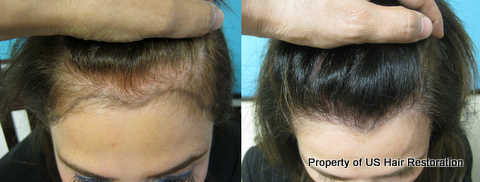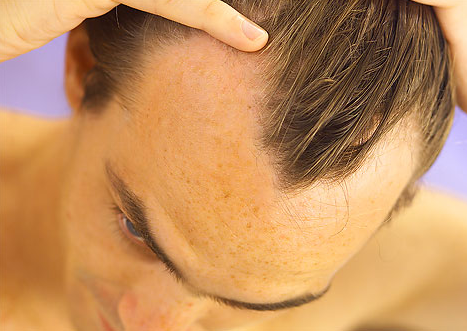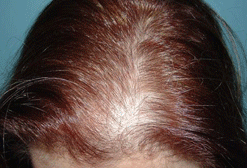Things to Know About Female Hair Restoration
Tuesday, October 1st, 2013What is the difference between female and male hair loss? Female hair loss is not as common as male hair loss. Male hair loss is known as male patterned baldness. Female hair loss usually doesn’t lead to complete baldness like male hair loss. Female hair loss could be known more as thinning.
Female Patterned Baldness (FPB) touches the entire scalp, unlike Male Patterned Baldness (MPB). For female hair loss the donor hair in the back is not protected like it is for males. After the age of 50, most men have some degree of hair loss.
Women can benefit from hair restoration, so they can restore their hair in the balding areas. For women, the most important factor in receiving a hair transplant is the amount of hair they have in the donor area. If a women’s hair loss is similar to a male’s hair loss, the woman will be a better candidate for a hair restoration procedure.

Women’s expectations will not be the same as men’s expectations. A good hair transplant surgeon should be aware of that and set realistic expectations. If a man is bald, having 50% of his original density might seem like a dream come true. For a woman however, having 50% density will most likely not be enough.
If a woman goes to see a hair transplant surgeon wanting 100% of her hair density back, the surgeon should be honest with her and tell her that she might not receive the 100% density back in just one surgery. In order for a woman to be a candidate for hair restoration, the hair transplant surgeon should look at the different factors that will determine the candidacy for the woman.
The different factors that need to be determined for women regarding hair restoration surgery is the limited balding area, the donor/recipient mismatch, and realistic expectations.
- The Limited Balding Area means that the area that the woman’s head is balding shouldn’t be all over the head, it should just be in a certain area.
- The donor/recipient mismatch means that the donor hair on the back of the woman’s head should be in a much better quality than the area’s that are balding.
- Realistic expectations mean that the hair transplant surgeon should make sure the woman understands the reality of a hair transplant surgery. The hair transplant surgery only moves hair from one area to another area that needs to be covered.
Overall, the final factor that a women needs to consider before having a hair restoration procedure is making sure the hair restoration surgeon is experienced in handling hair restoration procedures in women. A well knowledgeable and experienced surgeon will do the best job possible to help the woman reach the goal that they want to reach.




